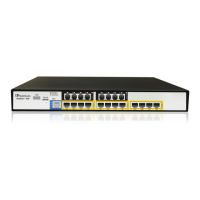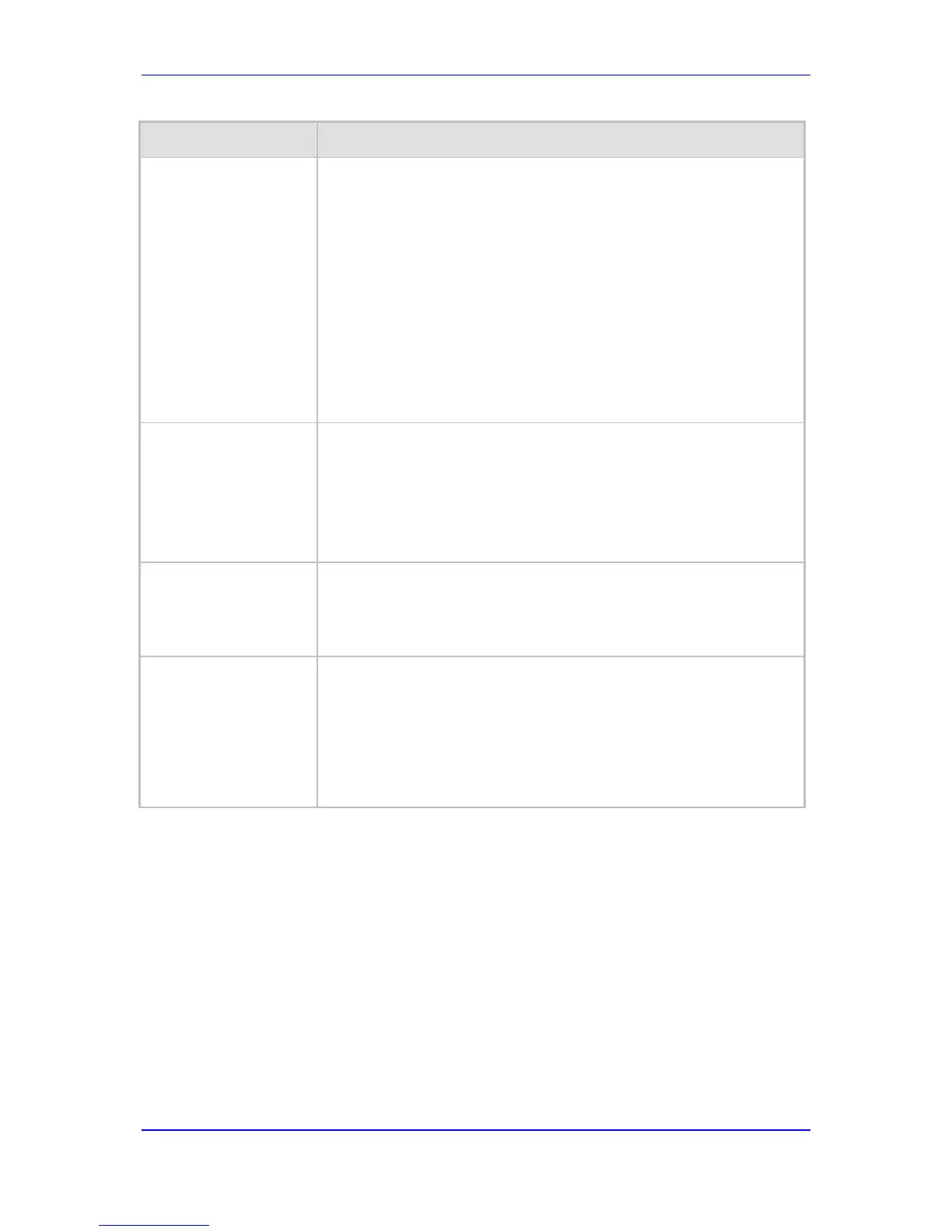required.
When two UA's pertain to the same SRD and this parameter is set to
[1], and one of the UA's is defined as a foreign user (example, “follow
me service”) located on the WAN while the other UA is located on the
LAN, then calls between these two UA's can’t be established until this
parameter is set to 0, as the device doesn’t interfere in the SIP
signaling. In other words, parameters such as IP addresses are not
manipulated for calls between LAN and WAN (although required).
When the global parameter SBCDirectMedia is disabled, you cannot
enable No Media Anchoring for two UA's pertaining to separate
SRDs; No Media Anchoring can only be enable for two UA's
pertaining to the same SRD.
For more information on media handling, see SBC Media Handling on
page 431.
Block Unregistered
Users
CLI: block-un-reg-users
[SRD_BlockUnRegUsers
]
Determines whether the device blocks (rejects) incoming calls (INVITE
requests) from unregistered users (pertaining to User-type IP Groups) for
the SRD.
[0] No = Calls from unregistered users are not blocked (default).
[1] Yes = Blocks calls from unregistered users.
Note: When the call is blocked, the device sends a SIP 500 "Server
Internal Error" response to the remote end.
Max Number of
Registered Users
CLI: max-reg-users
[SRD_MaxNumOfRegUs
ers]
Maximum number of users belonging to this SRD that can register with
the device. By default, no limitation exists for registered users
Enable Un-Authenticated
Registrations
CLI: enable-un-auth-
registrs
[SRD_EnableUnAuthenti
catedRegistrations]
Determines whether the device blocks REGISTER requests from new
users (i.e., users not registered in the device's registration database)
when the destination is a User-type IP Group.
[0] No = The device sends REGISTER requests to the SIP proxy
server and only if authenticated by the server does the device add the
user registration to its database.
[1] Yes = The device adds REGISTER requests to its database even
if the requests are not authenticated by a SIP proxy (default).
19.2 Configuring SIP Interface Table
The SIP Interface table allows you to configure up to 32 SIP Interfaces. The SIP Interface
defines a listening port and type (UDP, TCP, or TLS) for SIP signaling traffic on a specific
logical IP network interface configured for the device (in the Multiple Interface table).
The SIP Interface is configured for a specific application (i.e., Gateway\IP-to-IP, SAS, and
SBC) and associated with an SRD. For each SIP Interface, you can assign a SIP message
policy, enable TLS mutual authentication, enable TCP keepalive, and determine the SIP
response sent upon classification failure.
SIP Interfaces can be used, for example, for the following:

